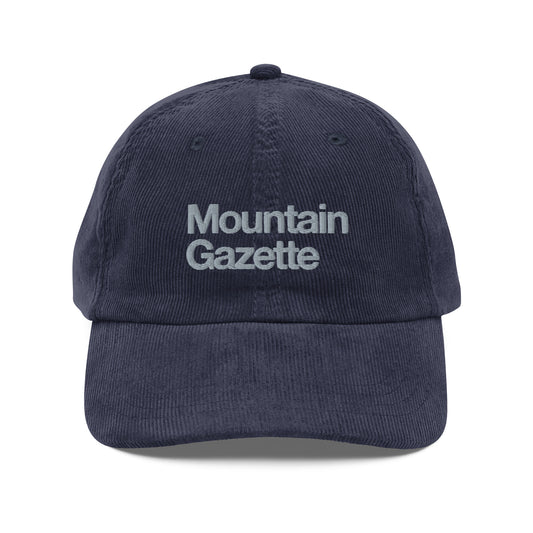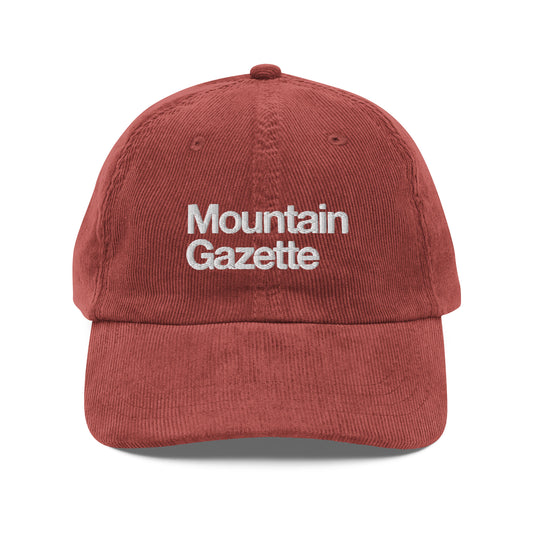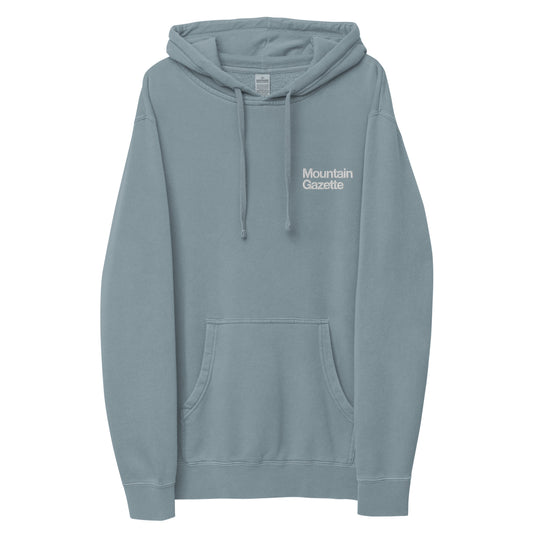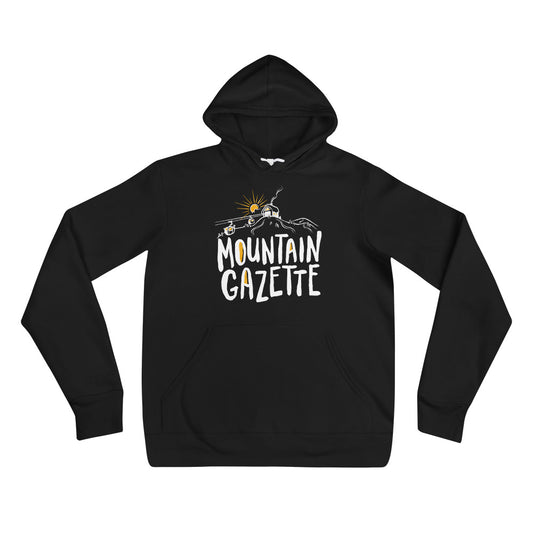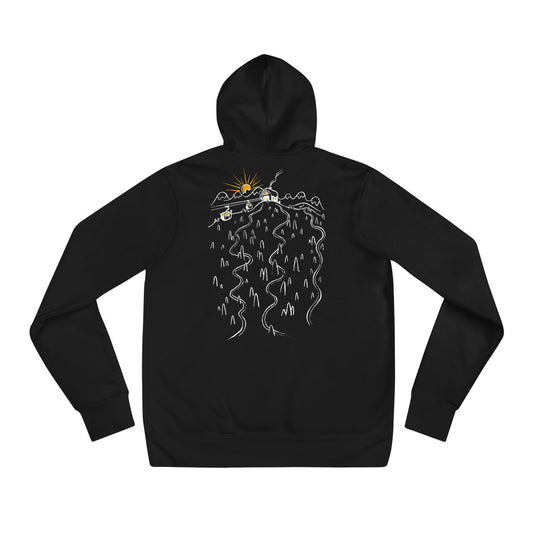
Trail Crew Stories is a project created by Joe Gibson to share the stories, methods, writings, and art of the community of trail workers. "Trail work is a skilled trade, often overlooked and under compensated," says Gibson. "And with a long legacy of tradition and institutional knowledge."
By Hannah Truby
Trail work is an art form hidden in plain sight, and Joe Gibson wants to make sure people see it. That’s why he created Trail Crew Stories, an online project dedicated to documenting the people, methods, and history of trail work. Consisting of interviews, portraiture, history, and practical knowledge, Gibson's digital archive is a testament to the trade of trail work and to the people who dedicate their lives to it.
“I think there's some pretty incredible work happening out there by some pretty incredible people,” Gibson says. “And they’ve got stories to tell.”
At 12 years old, Gibson dreamed of becoming an "Imagineer"—the creative minds behind Disneyland’s immersive attractions. Imagineers shape the fantastical, crafting worlds you can see, touch, and smell. In many ways, Gibson’s career in trail work isn’t so different.
“As an adult, I find myself working not as a Disney Imagineer, but as a trail worker for the National Park Service,” he says. “Both the Disneyland visitor and the National Park visitor are deceived about the landscapes into which they enter. While the Disneyland visitor is willfully and happily deceived, the National Park visitor is, more often than not, oblivious to the subtle deceptions at hand. We trail builders play a key role in that deception, engineering the paths from which most visitors view and experience a park.”


Historically, trail work was about finding the quickest way between two points. The earliest trails were those used and built by Indigenous communities, later expanded by the U.S. Forest Service in the 1890s, then by westward pioneers, hunters, trappers, and ranchers. Today, trails are gateways to the outdoors, offering scenic hikes and recreational escapes—but behind the scenes, an entire workforce is dedicated to their construction and upkeep.
Despite its critical role in shaping outdoor experiences, trail work remains largely overlooked. It is an invisible trade, passed down through a lineage of skilled laborers who have honed their craft for generations. Gibson, now in his eighth season of trail work, saw this obscurity firsthand.
“A lot of what you see in the media is about recruiting volunteers and conservation corps workers, which is great, but it creates this idea that trail work is something anyone can pick up a shovel and do on a weekend,” he says. “But there’s actually a high level of skill to it.”
Many in the trade never expected to end up there. Trail work is often stumbled into, rather than pursued—a career built on chance encounters and unexpected passion. But those who stay long enough find themselves in a love-hate relationship with the job.
“In a lot of these interviews, people talk about being completely overwhelmed by the beauty of the places they work in, humbled by the landscapes,” Gibson explains. “But they’ll also talk about how much pain they’re in, how they’ve lost relationships, how they have no savings or healthcare for 20 years. It’s a double-edged sword.”


Trail Crew Stories features a range of content, from personal essays to how-to guides. Titles like “Liberal Arts Education in Trails,” “The Trail Worker’s Essential Reading List,” and “Laure Aldrich: Hardass to Badass” offer a mix of technical insight and storytelling. Gibson’s hope is that the project not only preserves the legacy of trail work but also deepens public appreciation for the craft.
“There’s an expression that says good design is 99 percent invisible,” he says. “I’m trying to shed a little light on that invisibility. And that’s something you don’t have to be a trail builder to appreciate.”
Gibson’s storytelling journey began with a camera. Spending long hours in remote wilderness with fellow crew members, he started documenting their work and lives through portraits and interviews. The intimacy of shared hardship made his subjects open up in ways they might not have otherwise.
“I’d ask pretty much anything,” he says. “Like, why do you do this really hard, underpaid, kind of weird job that requires a lot of personal sacrifice? And I’ve just been going from there.”
While rewarding, the job is grueling. Trail workers hike long distances with full packs, carrying tools to build and maintain structures like drains, fences, and staircases. Their primary objectives: keep water off the trails and keep people on them. It’s a task that requires equal parts strength, strategy, and artistry.
“It’s challenging, and you’re learning constantly,” Gibson says. “Most days, I feel like an idiot at some point, and I’ve been doing this for years. But it’s nature—you’re constantly humbled. You could spend all season building a beautiful wall, and then a tree falls on it and destroys it.”
Gibson works for the National Park Service, but Trail Crew Stories is an independent project, shaped by his personal experiences rather than any official agency stance. If anything, it’s a grassroots effort to give voice to an often-overlooked profession—one that shapes the very way we experience the outdoors.
“Trails don’t just happen,” he says. “They’re built, maintained, and loved by people with stories worth telling.”
Although Joe works for the National Park Service, and his experiences with the Park Service inform his personal project, Trail Crew Stories does not speak on behalf of the agency.






